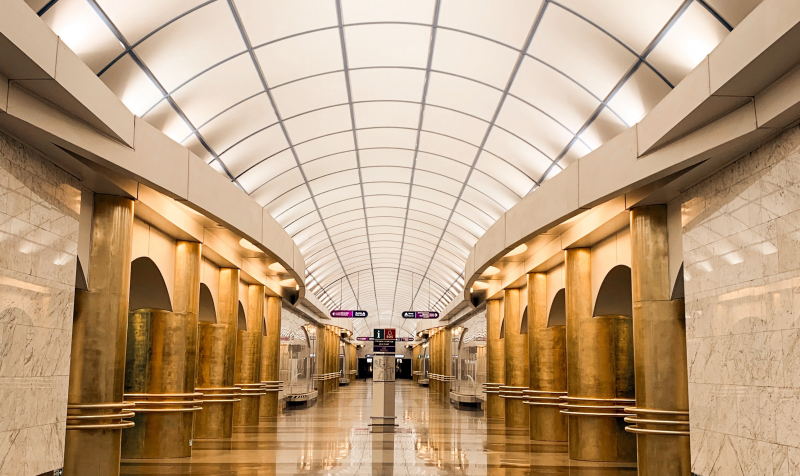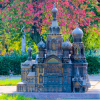Bachelor's student
A Peek Into St. Petersburg’s Metro System
One can hardly overlook the metro when examining a city’s transportation network. It is an indispensable public service, its economic and environmental benefits considerable: its carbon emissions and energy consumption are low, it reduces traffic congestion, increases the employment pool by making distant commutes more accessible, and positively impacts property values.

Let us examine the metro system of St. Petersburg, which transports over 2.5 million people across 72 stations: its history, appearance, and distinguishing features.
The history of St. Petersburg’s metro can be traced all the way back to 1820, when an engineer named Torgovanov proposed to Alexander I a plan to construct a tunnel under the Neva. Alas, this information is completely irrelevant, since the project was postponed and subsequently forgotten; until, that is, metros started appearing in other European capitals in the late 19th and early 20th centuries. The idea would have to wait until after the revolution to see the light of day.
The Soviet government made the decision to build the first metro system in Moscow. The first line was opened in 1935, and the second followed three years later. Only after the completion of the latter was the issue of St. Petersburg’s metro raised anew. The project finally commenced in 1941, only to be halted soon after and resumed postbellum in 1947.
It took a decade to complete the first line, which made its public debut on November 15, 1955. It included seven stations: Ploschad Vosstaniya, Vladimirskaya, Tekhnologicheskiy Institut, Baltiyskaya, Narvskaya, Kirovskiy Zavod, and Avtovo. Yet construction did not cease here, for the line was extended centrifugally, with Ploschad Lenina and the gloried Chernyshevskaya built soon after, adding the Finland station to the growing list of train stations accessible via metro.
Most of the city’s first metro stations exuded a prototypical Stalinistic austerity, emphasized through imposing proportions and architectonic symmetry, but that approach would soon fade in favor of a more diverse design palette, cascading in the following decades into an ensemble of stylistic splendor.

Stations bear the marks of our city’s many epochs, from the tsarist to the federal, the imperial to the Soviet. Visages of our pioneers can be found etched in marble, tessellated mosaics depicting our naval glories assembled overhead, and artistic sentiments upon the subject of our varied past solemnly expressed.
Our system’s unique architectural characteristics extend beyond just the visual. Of particular interest are the city’s ten enclosed stations, such as Gostiniy Dvor, where carriages can only be entered via a set of access points. These stations are safer and can be built more quickly and at a lesser expense, but their significant drawback is the greater cost of maintenance.
Yet another hallmark of our metro is its exceptional depth. In fact, its average across all stations is second only to Pyongyang’s system, which was built as part of a subterranean military facility. Currently, the most vertically displaced of our stations is Admiralteyskaya. At 86 meters below ground, it is the world’s second deepest after Kyiv’s Arsenalnaya and its 106 meters.

The station’s construction was troubled, as completion was inhibited by the topological and geological peculiarities of its placement. It had initially been planned as part of the first line in the 50's, but for these reasons was postponed and largely forgotten until 1997, when construction began at last. Yet it would take another 14 years for it to open to the public in December of 2011.
Admiralteyskaya may well be the most lavishly decorated of our metro stations. One is first treated to a stained-glass artwork depicting two angels clasping a clock when descending into the station proper from the vestibule, before treading upon a granite floor betwixt marble columns and gazing at exquisite mosaics depicting Neptune and the personification of the Neva river.
